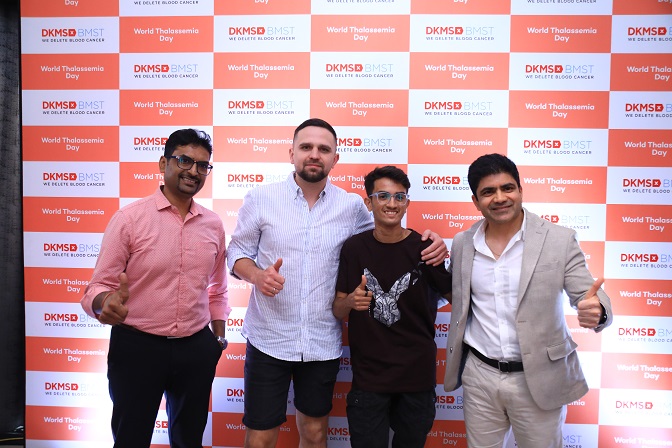Pre Budget Expectation Quotes From Healthcare Veterans
Dr. Pratap C Reddy Founder Chairman Apollo Hospitals Group The pandemic has made us realise that for any return to normal growth of the economy, it is healthcare and only healthcare that can form the bulwark for recovery.

Dr. Pratap C Reddy
Founder Chairman
Apollo Hospitals Group
The pandemic has made us realise that for any return to normal growth of the economy, it is healthcare and only healthcare that can form the bulwark for recovery. This needs Health to be made a National Priority. The budget needs to build on the advantageous position that the extensive successful vaccination program has placed us in, where the third wave has seen lesser hospitalisations. It is important to vaccinate the economy too through building and preparing a healthcare infrastructure that lets us face not just any future pandemic but also the current pandemic of non-communicable diseases (NCDs) that we face.
Apollo ProHealth, first of its kind, provides holistic and comprehensive health programme powered by personal risk assessment enabled by artificial intelligence. It is driven by technology and brings human touch in the form of personalised human mentor.
The future of healthcare has enormous opportunity for India to become a global healthcare destination. India can play a significant role in future of Health Workforce Globally by creating huge number of health work force for India and the world.
………………………………………………………………………………………………………………………………………………………………………………………………………………………………………………………

Dr. Preetha Reddy
Executive Vice Chairperson
Apollo Hospitals Group
Going forward, the focus to build a robust and resilient healthcare model requires that India fortifies its investments into physical and digital health infrastructure as that would enable every citizen to access medical attention irrespective of where they live and also whenever they need to.
Therefore, the immediate priorities must include taking up public expenditure on health to at least 3 per cent of GDP, a concerted thrust on encouraging investments that bridge gaps in infrastructure & resources and also efforts to accelerate the adoption of digital technologies. These actions are pivotal building blocks of an Atmanirbhar healthcare ecosystem. Also, more than ever before, at this point in time, the people of India are looking to the Union Budget 2022-23 to chart a transformational course in nurturing good health for all and also to be able to access best in class healthcare at all times.
………………………………………………………………………………………………………………………………………………………………………………………………………………………………………………………

Mr. Joy Chakraborty
COO
P. D. Hinduja Hospital & MRC
As India stands at the precipice of rapid growth post the pandemic with its green restart strategies, all eyes are set on the manufacturing sector to spearhead this growth and the move towards sustainability. The outlay from the 2022 budget, I believe, should set the pace of growth for this decade, and pave the way for India to reach its ambitious goal of becoming a $5 trillion economy by 2025. The PLI scheme introduced in 2020 served as a game-changer for many industries that were hitherto hesitant to invest in new technologies due to the high cost of capital. Going from strength to strength should now be our focus, by way of addition of more sectors within the scheme to boost capital spending. This will invariably help build a resilient ecosystem for these sectors that will bolster our overall growth. A concerted effort on ensuring that these schemes subsidise the right benefactors, is also crucial in helping facilitate the ease of doing business in the country. An increase in budgetary outlay towards healthcare, particularly in developing infrastructure surrounding the healthcare sector is a necessity evident from our pandemic learnings. Better indoor air quality, green comfort and energy efficiency in hospitals, smart precision cooling for pharma & lab facilities, fresh & safe food & drink etc. will be important as our growing population faces new challenges in coming years. With the country’s fight against Climate Change including the recent ratification of Kigali agreement and our strong position on adopting sustainable solutions in the HVAC sector, it is crucial that the 2022 Union Budget provides the industry with increased budget allocation to develop sustainable cooling solutions and well-connected cold chain infrastructure across the country. The additional funds will also help create training programs for various industry stakeholders to promote the research, production and use of natural & low GWP refrigerants that can contribute to India’s self-sufficient green economic growth.
2022 budget must also look at incentivising recyclability of manufactured goods which helps promote circular thinking. Renewable energy and decarbonization incentives along with recyclability incentives can collectively help India get closer to its net zero goals. Overall, India’s development proposals in all sectors should be planned with sustainability at its core, to ensure a better tomorrow for our future generations.
………………………………………………………………………………………………………………………………………………………………………………………………………………………………………………………

Anish Bafna
CEO & MD
Healthium Medtech
The Finance Budget of FY 2021-22 had made a landmark allocation of 137% increase over FY21 in the healthcare sector, by allocating a total of INR 2,23,846 crore for healthcare. As the country faces the imminent third wave of the pandemic, the expectations are higher for a significant increase in the budget allocation into the healthcare sector to promote the preventive, curative, well-being and essential services’ sectors that have already started off on a high note to not only cater to the country but also the world. As we gear up for the budget of FY 2022-23, the expectation is high in terms of research and development push to the Medtech and Devices sector in terms of Incentivisation and tax holidays for a period of 10 years to be provided on the spending on research. There is also a need to increase the export incentives under the newly introduced Remission of Duties and Taxes on Export Products Scheme (RoDTEP), rationalisation of Custom Duty, roll back Health Cess on Imports of Medtech Products and amendment of SEZ Act to allow SEZ medtech manufacturers to sell their produce in the domestic market. Facilitating of single-window clearances for government approvals for the local companies, rebates on costs related to product registrations in foreign countries and keeping exported products outside the purview of price control will together contribute to a more significant push for exports.
Strategic investments and partnerships with Medtech Parks that have already been commissioned in four states and their readiness for national and international medical devices companies should be able to push the needle in the positive direction. The above measures will go a long way to ensure that there is a further boost in domestic R&D ecosystem that will provide world-class quality products for domestic and international use.
………………………………………………………………………………………………………………………………………………………………………………………………………………………………………………………

Dheeraj Jain
Founder
Redcliffe Labs
“The ongoing pandemic has put the healthcare sector in the spotlight. The Govt of India has been very supportive to companies working in the healthcare domain. Diagnostic companies to be specific are using advanced technologies in the early diagnosis and predictive analysis that give healthcare experts an early insight into complex health conditions. The upcoming budget is expected to be more focused on increased investments for R&D in terms of developing new technologies that enable faster and efficient healthcare delivery at affordable costs. Tax deduction on import duties of diagnostic equipments, beneficial tax rates to attract investments and considering healthcare for zero-rated GST can be crucial steps by the Govt in the advancement of the sector. Another welcome step would be to promote medical education in the country to increase the number of skilled healthcare workers which is the need of the hour.”
………………………………………………………………………………………………………………………………………………………………………………………………………………………………………………………

Ravichandran Purushothaman
President
Danfoss Industries Pvt. Ltd.
As India stands at the precipice of rapid growth post the pandemic with its green restart strategies, all eyes are set on the manufacturing sector to spearhead this growth and the move towards sustainability. The outlay from the 2022 budget, I believe, should set the pace of growth for this decade, and pave the way for India to reach its ambitious goal of becoming a $5 trillion economy by 2025.
The PLI scheme introduced in 2020 served as a game-changer for many industries that were hitherto hesitant to invest in new technologies due to the high cost of capital. Going from strength to strength should now be our focus, by way of addition of more sectors within the scheme to boost capital spending. This will invariably help build a resilient ecosystem for these sectors that will bolster our overall growth. A concerted effort on ensuring that these schemes subsidise the right benefactors, is also crucial in helping facilitate the ease of doing business in the country. An increase in budgetary outlay towards healthcare, particularly in developing infrastructure surrounding the healthcare sector is a necessity evident from our pandemic learnings. Better indoor air quality, green comfort and energy efficiency in hospitals, smart precision cooling for pharma & lab facilities, fresh & safe food & drink etc. will be important as our growing population faces new challenges in coming years.
With the country’s fight against Climate Change including the recent ratification of Kigali agreement and our strong position on adopting sustainable solutions in the HVAC sector, it is crucial that the 2022 Union Budget provides the industry with increased budget allocation to develop sustainable cooling solutions and well-connected cold chain infrastructure across the country. The additional funds will also help create training programs for various industry stakeholders to promote the research, production and use of natural & low GWP refrigerants that can contribute to India’s self-sufficient green economic growth.
2022 budget must also look at incentivising recyclability of manufactured goods which helps promote circular thinking. Renewable energy and decarbonization incentives along with recyclability incentives can collectively help India get closer to its net zero goals. Overall, India’s development proposals in all sectors should be planned with sustainability at its core, to ensure a better tomorrow for our future generations.
………………………………………………………………………………………………………………………………………………………………………………………………………………………………………………………

Sahil Dharia
Founder & Chief Executive
Soothe Healthcare
India is at the inflection point of a COVID recovery phase coupled with a ‘demographic dividend’ opportunity. For both reasons – internal of giving jobs to its millions of youth and external to be able to balance emerging geo-political compulsions, India needs to leapfrog to a double digit GDP growth rate. Accordingly, industry expects meaningful efforts on two fronts– Simplification of Regulation and a Push for Make in India.
Simplification of regulations specially with respect to unlocking Land, Labour & Capital use will create an overall ‘encouraging’ environment for entrepreneurs to take risk and business to thrive given the large domestic opportunity.
Make in India is the pointed edge of that weapon that gives jobs, builds capacity, reduces our fiscal deficit and maybe even helps build technological prowess in time. These are all essential ingredients if India wants to project as a global power.
Flat GST Rate:
A major simplification drive for instance, a flat GST rate will go a long way in creating an impetus for a cyclical bull run in the industry. Moreover, there are anomalies in GST, for example, in the feminine hygiene sector with GST on sanitary pads being ‘zero’ the input tax credit can’t be availed by industry, making the transaction tax inefficient thereby reducing the growth CAGR. Though manufacturing-based companies in India appreciate no Zero GST on sanitary pads, it is still significantly affected by high raw material and manufacturing costs. Hence, we look for some relaxation in this area.
Government support towards Non- Tech Companies to push Make in India Agenda:
To promote Make in India, the government should encourage more investment in the non-Tech companies. Right now, capital is increasingly being deployed towards Tech companies majorly Fintech. Government investments via e.g SIDBI serves the purpose of crowding capital into a sector which is already getting more than sufficient attention. Indian entrepreneurs need this support to shift the materials supply chain from China and sell products not only via the internet economy but also offline for easy access to a large population residing in the hinterland of Bharat.
Mortgage Free Loans to Small Entrepreneurs:
Lastly, banks need to reduce formalities and provide small entrepreneurs with loans without a collateral. The CGTSME for instance can be increased from the current max 1 crore to 5 crore and make any MSME business eligible for it. An environment where small entrepreneurs can get loans without having to mortgage any personal asset will drive growth of new businesses as well as expansion of existing businesses and unlock the potential of our robust trading & manufacturing sector.
If we get just a couple of things right, then the momentum we can build in the next decade will be comparable to the ‘great leap forward’ of China in the 90’s and Indian economy will still grow at 5-7% in the coming decade. This can truly solidify India’s position in the global pecking order.
………………………………………………………………………………………………………………………………………………………………………………………………………………………………………………………

Saransh Chaudhary
President, Global Critical Care
Venus Remedies Ltd & CEO
Venus Medicine Research Centre (VMRC)
In line with the Aatmanirbhar Bharat initiative, the Union Budget should lay a framework to make India the pharmacy of the world with focus on self-sufficiency. Since this can be best achieved by building on the manufacturing and research capabilities of the Indian pharmaceutical industry, the government should go about it by announcing incentives and grants for cost-intensive research, particularly in critical care segments like antimicrobial resistance. All the material procured by pharma firms for R&D purposes should be exempted from customs duty and GST. While as per existing DSIR notifications, there is already provision for partial waivers and/or reduction of custom duty and GST on import of certain items, a complete waiver would further help in setting up a world-class R&D infrastructure. The government should enable our R&D-driven pharma companies to compete with top global innovators and secure a significant market share by offering interest subsidies and lower GST on clinical trials and research activities, giving tax concessions to exporters and restoring weighted tax deduction under Section 35(2AB). The Finance Minister should also earmark funds to strengthen the pharma supply chain and distribution infrastructure and integrate it with latest digital technologies. This will not only ensure improved access and uninterrupted deliveries in real time, but will also lead to cost reduction and quality improvement, thus making Indian pharma companies far more competitive.
………………………………………………………………………………………………………………………………………………………………………………………………………………………………………………………

Archit Garg
Co-founder
Glamyo Health
The pandemic has unravelled the gaps in the Indian healthcare system. However, with the startups coming into the picture, new and innovative solutions have come up. The way RBI treated NBFCs and fintech as its extended arms to penetrate deeper into the system, Indian government can consider healthcare startups as its aide to serve the common people in tier 2 and tier 3, thus strengthening the healthcare ecosystem in India. Besides, new programs like Unified Health Interface shall further help in transparency and affordability in Health Treatments. We expect a continued allocation towards healthcare startups, and financial support for better customer adoption.
………………………………………………………………………………………………………………………………………………………………………………………………………………………………………………………

Dr. Rahul Pandit
Director – Critical Care
Fortis Hospitals Mumbai
Currently, there is no direct evidence that NeoCov affects human body, and we should not panic or get stressed. There are many viruses in the world that are yet to be discovered and who’s characteristics are not known. We are going through a challenging time and should focus on managing ongoing COVID19 pandemic. I advise people not to panic, keep their guard up and follow COVID19 appropriate protocols.






